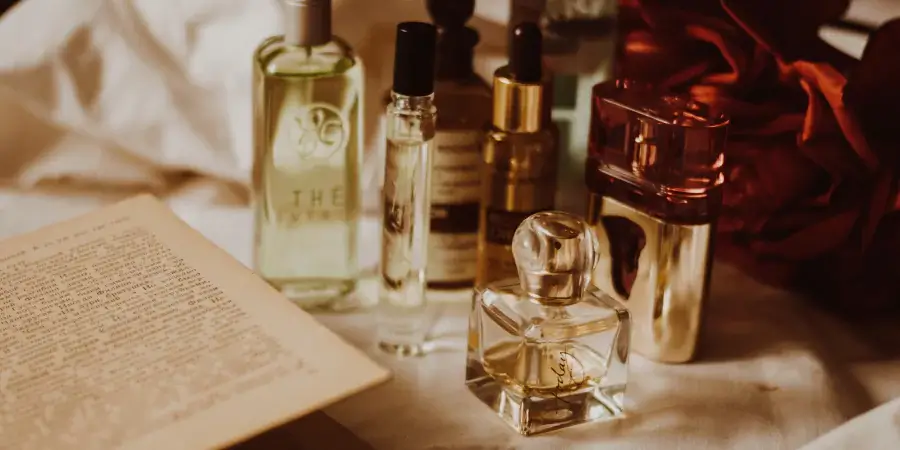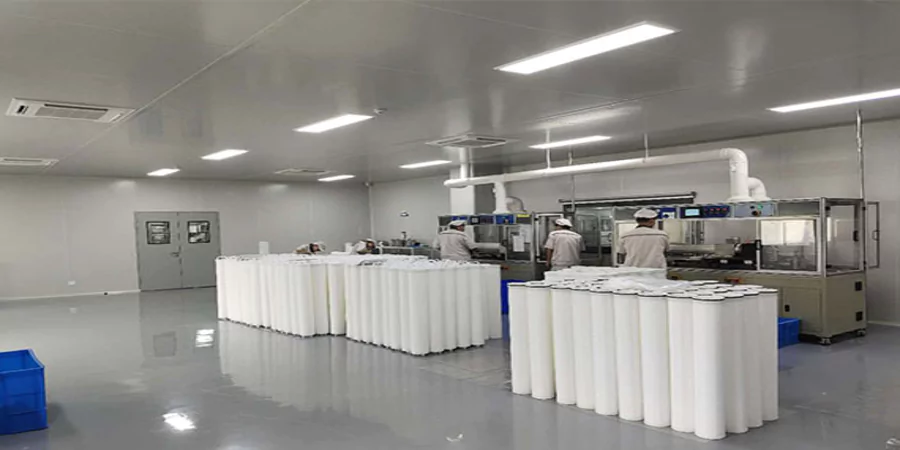The human olfactory system processes approximately 10,000 distinct scents and connects directly to the limbic system the brain region governing emotions, memories, and decision-making creating neurological pathways that bypass rational thought and trigger immediate emotional responses, a phenomenon retail marketers increasingly exploit through strategic scent branding initiatives. According to research published in the Journal of Retailing and Consumer Services analyzing sensory marketing across 400+ retail environments, appropriate ambient scenting increases average dwell time by 15.9%, improves product evaluation positively by 14.8%, and boosts purchase intention by 6.0% compared to unscented control environments translating to measurable conversion improvements and revenue growth for retailers implementing evidence-based olfactory marketing strategies. The global scent marketing industry reached $1.8 billion in 2024 according to MarketsandMarkets research, driven by luxury retail adoption, experiential retail trends emphasizing multisensory engagement, and growing scientific evidence demonstrating scent’s influence on consumer behavior, mood regulation, and brand recall. Yet despite increasing adoption, most retailers approach scent branding intuitively rather than strategically selecting fragrances based on personal preference rather than brand alignment, target demographic research, or atmospheric goals; implementing systems without measurement frameworks; and overlooking critical considerations including fragrance sensitivity accommodation, seasonal adaptation, and competitive differentiation. For retail managers, brand directors, marketing professionals, and store owners seeking to leverage olfactory marketing for competitive advantage, understanding scent psychology, implementation technologies, strategic selection frameworks, and measurement methodologies proves essential for achieving the conversion improvements and brand differentiation that justify scent marketing investments averaging $3,000-$15,000 annually for mid-sized retailers. This comprehensive guide examines nine evidence-based strategies for implementing scent branding that improves retail sales conversion, supported by neuroscience research, consumer behavior studies, and insights from retailers successfully employing olfactory marketing as competitive differentiator.
Understanding Scent Marketing Science and Psychology
The Neuroscience of Olfactory Processing
Unique Characteristics of Smell:
Unlike other senses (vision, hearing, touch, taste) that route through the thalamus for processing, olfactory information travels directly to:
Limbic System:
- Amygdala: Emotional processing and memory formation
- Hippocampus: Memory consolidation and spatial memory
- Hypothalamus: Physiological responses (heart rate, stress hormones)
Result: Scents trigger immediate emotional responses and memory recall without conscious cognitive processing explaining why specific smells instantly evoke memories, emotions, or associations formed years earlier.
Proustian Effect: Named after Marcel Proust’s famous madeleine passage, this phenomenon describes how scents trigger vivid autobiographical memories more effectively than visual or auditory cues.
Research from Rockefeller University demonstrates:
- Humans recall scents with 65% accuracy after one year
- Visual recall: 50% after three months
- Scent-evoked memories are more emotional and evocative than memories triggered by other senses
Commercial Implication: Scent creates stronger, longer-lasting brand associations than visual branding alone.
Scent’s Impact on Consumer Behavior
Scientific Research Evidence:
Dwell Time and Environment Evaluation: Study published in Journal of Business Research (Spangenberg et al., 1996):
- Ambient scent increased perceived time spent in environment (felt shorter than actual)
- Enhanced environment evaluation ratings
- Improved intentions to visit and willingness to shop
Purchase Behavior: Research from Washington State University (Morrin & Ratneshwar, 2003):
- Simple scents (single note) increased spending in gift shop by 8-10%
- Complex scents showed no significant impact
- Scent-product congruence (matching scent to product category) enhanced effects
Product Evaluation: Study in European Journal of Marketing (Bone & Ellen, 1999):
- Products evaluated in scented environments received higher quality ratings
- Effect strongest when scent matched product category
- Incongruent scents created negative evaluation
Mood and Arousal: Research documented in Journal of Retailing (Chebat & Michon, 2003):
- Pleasant ambient scents improved shopper mood
- Positive mood correlated with increased spending
- Effect mediated by arousal level (energizing vs. relaxing scents)
Brand Recall: Study from St. Joseph’s University (Morrin & Ratneshwar, 2000):
- Scent enhanced brand recall by 50-100%
- Effect particularly strong for unfamiliar brands
- Scent-brand associations formed rapidly and persisted
Scent Marketing Market Landscape
Adoption by Retail Segment:
Luxury Retail (85% adoption):
- Abercrombie & Fitch: “Fierce” cologne throughout stores
- Bloomingdale’s: Custom “Bloomie’s” fragrance
- Ralph Lauren: Leather scent in Polo stores
- Hermès: Leather and wood scents reinforcing craftsmanship
Hospitality (75% adoption):
- Westin Hotels: White Tea signature scent
- Marriott: Lobby scents varying by brand (Renaissance vs. Courtyard)
- Casinos: Oxygen-rich, stimulating scents keeping guests alert and engaged
Mid-Market Retail (35% adoption):
- Growing adoption as technology costs decrease
- Focus on holiday/seasonal scenting vs. year-round
- Often combined with music and lighting for atmospherics
Grocery/Food Retail (90% adoption – often unintentional):
- Bakery scents (intentionally vented to store entrance)
- Coffee aroma (Starbucks ventilation deliberately diffuses)
- Natural product scents (fruits, flowers)
Service Businesses (40% adoption):
- Real estate: Baking cookies during open houses
- Auto dealerships: New car scent enhancement
- Medical/dental: Anxiety-reducing scents (lavender, vanilla)
Technology Evolution:
- 1990s: Aerosol sprays (inconsistent, chemical-smelling)
- 2000s: HVAC integration (expensive, professional installation required)
- 2010s: Standalone cold-air diffusion (accessible, affordable, effective)
- 2020s: Smart scenting (programmable intensity, scheduling, data tracking)
Cost Trajectory:
- Professional scent systems: $10,000-$50,000 (2000) → $2,000-$15,000 (2024)
- Monthly fragrance oils: $500-$2,000 (depending on space size, intensity)
- Maintenance: Minimal with modern cold-air diffusion technology
Tip 1 – Develop Scent Strategy Aligned with Brand Identity
Brand Personality and Scent Correlation
Brand Archetypes and Scent Profiles:
Luxury/Sophisticated:
- Scent characteristics: Rich, complex, refined
- Notes: Oud, sandalwood, leather, white florals (gardenia, jasmine)
- Examples: Tom Ford stores (tobacco and leather), Tiffany & Co. (subtle floral)
- Psychology: Conveys exclusivity, quality, refinement
Natural/Organic/Wellness:
- Scent characteristics: Fresh, clean, botanical
- Notes: Eucalyptus, mint, green tea, bamboo, sea salt
- Examples: Lululemon (eucalyptus), Whole Foods (subtle produce scents)
- Psychology: Health, purity, environmental consciousness
Energetic/Youthful:
- Scent characteristics: Bright, citrus-forward, sweet
- Notes: Orange, lemon, grapefruit, coconut, vanilla
- Examples: Hollister (tropical fruit), Victoria’s Secret Pink (fruity floral)
- Psychology: Fun, approachable, optimistic
Traditional/Heritage:
- Scent characteristics: Warm, nostalgic, comforting
- Notes: Cedar, tobacco, old books, vanilla, cinnamon
- Examples: Brooks Brothers (mahogany and leather), Anthropologie (fig and sandalwood)
- Psychology: Trustworthy, established, timeless
Modern/Minimalist:
- Scent characteristics: Clean, subtle, sophisticated
- Notes: White musk, soft linen, light citrus, aquatic
- Examples: Apple Store (none – deliberate choice), Muji (subtle wood)
- Psychology: Simplicity, functionality, understated elegance
Playful/Creative:
- Scent characteristics: Unexpected combinations, memorable
- Notes: Cotton candy + jasmine, coffee + vanilla, cookies + spice
- Examples: Dylan’s Candy Bar (sugar/candy), LUSH (product-specific fragrances)
- Psychology: Whimsy, creativity, memorability
Brand Scent Development Process
Step 1: Brand Audit (Week 1-2)
- Define brand values, personality, positioning
- Identify target demographic and psychographics
- Review visual identity (colors, design aesthetic, typography)
- Assess competitive positioning
- Articulate desired emotional response from customers
Step 2: Scent Brief Development (Week 3)
- Translate brand attributes to sensory descriptors
- Define scent objectives (energize, relax, intrigue, comfort)
- Establish scent parameters (intensity, complexity, seasonality)
- Identify scent “no-go” zones (overly sweet, too perfume-like, specific allergens)
Step 3: Scent Exploration and Sampling (Week 4-6)
- Partner with scent marketing company (e.g., Scent Australia, ScentAir, Prolitec, Ambius)
- Receive 5-10 scent samples based on brief
- Test samples in actual retail environment
- Gather feedback from staff and select customers
- Narrow to 2-3 finalists
Step 4: Pilot Testing (Week 7-10)
- Deploy finalists in test locations or store sections
- Measure customer and employee response
- Assess intensity, diffusion, and longevity
- Monitor for negative reactions or complaints
- Analyze impact on dwell time and conversion (if measurable in pilot timeframe)
Step 5: Refinement and Finalization (Week 11-12)
- Adjust formula based on testing (increase/decrease specific notes, modify intensity)
- Secure final approval from leadership
- Document scent specifications for consistency
- Plan rollout schedule and training
Step 6: Implementation (Week 13+)
- Install scent systems across locations
- Train staff on operation, intensity adjustment, troubleshooting
- Establish monitoring and refill procedures
- Launch internal and external communication (if signature scent part of brand story)
Custom vs. Off-the-Shelf Scents:
Custom Signature Scent:
- Advantages: Unique, ownable, perfect brand alignment, competitive differentiation
- Disadvantages: Development time (3-6 months), cost ($5,000-$25,000 development + $200-$500/gallon fragrance oil), minimum order quantities
- Appropriate for: Multi-location chains, luxury brands, brands with strong identity
Pre-Formulated Scents:
- Advantages: Immediate availability, lower cost ($50-$150/gallon), proven fragrances
- Disadvantages: Not unique (competitors could use same), limited customization
- Appropriate for: Independent retailers, pilot programs, seasonal/temporary scenting
Brand-Scent Congruence Examples
Success Stories:
Singapore Airlines:
- Custom “Stefan Floridian Waters” scent (collaboration with fragrance house)
- Diffused in cabins, infused in hot towels, worn by flight attendants
- Result: 98% brand recognition of scent (passengers associate scent with airline)
Westin Hotels:
- “White Tea” signature scent (clean, sophisticated, spa-like)
- Diffused in lobbies, used in room products
- Scent available for purchase (extending brand into homes)
- Result: Increased brand recall and customer satisfaction scores
Bloomingdale’s:
- Custom scent varying by store section (different for women’s, men’s, home)
- Seasonal variations (holiday spices in November-December)
- Result: Extended dwell time in scented sections vs. unscented
Failures and Lessons:
Abercrombie & Fitch “Fierce” Controversy:
- Extremely strong scenting (visible fragrance clouds at mall entrances)
- Customer complaints about headaches, allergic reactions
- Mall tenants complained about scent migration
- Lesson: Subtle beats overpowering; consider scent sensitivity
Millenial-Targeted Brand with “Old Lady” Scent:
- Undisclosed fashion retailer selected powdery floral (focus group favorite with older testers)
- Target demographic (18-30) associated scent with grandmothers
- Lesson: Test with actual target demographic, not just “pleasant” scent
Tip 2 – Leverage Scent-Emotion Connections for Memorable Experiences
Emotional Response Mapping
Scent Families and Associated Emotions:
Citrus (Orange, Lemon, Grapefruit, Bergamot):
- Emotions: Energized, happy, optimistic, alert
- Physiological: Increased heart rate, alertness
- Applications: Morning retail, activewear stores, electronics (encouraging browsing energy)
- Research: Study in Chemical Senses found lemon scent increased positive mood by 24%
Floral (Jasmine, Rose, Lavender, Gardenia):
- Emotions: Calm (lavender), romantic (rose), luxurious (jasmine)
- Physiological: Reduced stress hormones (lavender), increased relaxation
- Applications: Spas, lingerie stores, luxury boutiques, cosmetics
- Research: International Journal of Neuroscience found lavender reduced cortisol 31%
Woody (Cedar, Sandalwood, Vetiver, Oud):
- Emotions: Grounded, sophisticated, secure, confident
- Physiological: Calming effect, reduced anxiety
- Applications: Men’s fashion, furniture stores, financial institutions
- Research: Journal of Physiological Anthropology found cedar scent lowered sympathetic nervous activity
Spice (Cinnamon, Clove, Nutmeg, Ginger):
- Emotions: Warm, nostalgic, comforting, festive
- Physiological: Increased alertness, appetite stimulation
- Applications: Holiday retail, home goods, bakeries, gift shops
- Research: Smell and Taste Research Center found cinnamon evoked strongest nostalgia
Fresh/Clean (Linen, Cotton, Sea Breeze, Rain):
- Emotions: Pure, clean, organized, peaceful
- Physiological: Neutral to slightly calming
- Applications: Athletic wear, cleaning products, modern furniture, tech products
- Research: Linked to perceptions of cleanliness and organization
Vanilla:
- Emotions: Comforting, sweet, happy, relaxed
- Physiological: Stress reduction, calming
- Applications: Children’s stores, casual apparel, gift shops, cafes
- Research: Extremely universal appeal (85%+ find pleasant cross-culturally)
Mint/Eucalyptus:
- Emotions: Refreshed, alert, clean, focused
- Physiological: Increased cognitive performance, alertness
- Applications: Fitness centers, health food stores, pharmacies
- Research: International Journal of Neuroscience found peppermint improved concentration
Creating Scent-Memory Associations
Principles of Scent Memory Formation:
Consistency:
- Use identical scent every time customer enters
- Maintain scent across all locations
- Include in ancillary touchpoints (shopping bags, packaging if feasible)
- Timeline: Scent-brand association forms after 3-5 exposures typically
Distinctiveness:
- Select unique scent (not common household/personal care fragrance)
- Avoid scents customers already associate with other contexts
- Complex scents (multiple notes) more memorable than single-note
- Goal: Customer smells scent elsewhere and thinks of your brand
Emotional Resonance:
- Positive emotions strengthen memory encoding
- Align scent with desired brand emotion
- Ensure scent doesn’t trigger negative associations (e.g., hospital smells, cleaning products)
Repetition:
- Every store visit reinforces scent-brand neural pathway
- Long-term customers develop strongest associations
- Scent changes disrupt established associations (consider carefully before changing)
Implementation Example:
Boutique Hotel Chain:
- Scent: Custom blend (amber + white tea + subtle citrus)
- Touchpoints: Lobby, corridors, in-room amenities (lotion, soap)
- Consistency: Same scent across 50 properties globally
- Duration: Maintained 8+ years
- Result: Guest surveys show 73% recognize scent as brand identifier, 41% specifically mentioned scent in positive reviews
Emotional Journey Mapping
Customer Experience Stages and Scent Strategy:
Entrance/Discovery (First 30 Seconds):
- Goal: Welcome, intrigue, set tone
- Scent intensity: Medium (noticeable without overwhelming)
- Scent type: Matches brand personality, inviting
- Critical moment: First impression formation
Browsing/Exploration (5-15 Minutes):
- Goal: Maintain engagement, encourage thorough exploration
- Scent intensity: Subtle (background, not focus)
- Scent type: Maintains consistency with entrance, doesn’t fatigue
- Technique: Ensure even diffusion (no dead zones or overpowering areas)
Decision/Purchase (Variable):
- Goal: Positive associations with purchase decision
- Scent intensity: Consistent with browsing areas
- Additional element: Some retailers add subtle scent to packaging (extends experience)
Departure/Conclusion:
- Goal: Positive farewell, encourage return
- Scent strategy: Maintain through exit (final scent exposure reinforces memory)
Post-Purchase:
- Extension opportunities: Scented shopping bags, product samples with fragrance, invitation to purchase signature scent
- Goal: Trigger brand recall when customer encounters scent again
Tip 3 – Engineer Scent Delivery Systems for Optimal Atmospheric Enhancement
Scent Diffusion Technology Options
Cold-Air Diffusion (Nebulization):
Technology:
- Atomizes fragrance oil into ultra-fine dry mist
- No heat (preserves scent integrity, no residue)
- Programmable intensity and scheduling
- HVAC integration or standalone units
Advantages:
- Most effective coverage (300-5,000+ sq ft per unit)
- Consistent intensity
- Dry diffusion (no oil residue on surfaces)
- Professional appearance
- Smart features (IoT connectivity, remote monitoring)
Disadvantages:
- Higher cost ($500-$3,000 per unit)
- Requires fragrance oil refills ($50-$200 monthly depending on intensity)
- Professional installation recommended for HVAC integration
Applications:
- Multi-room retail (department stores, showrooms)
- Large open spaces (auto dealerships, furniture stores)
- Professional implementations
Leading Brands:
- ScentAir, Prolitec, Ambius, Air Aroma, Scent Australia (Australian market)
Heat Diffusion:
Technology:
- Warms fragrance oil to release scent
- Plug-in or candle-based
- Simple, low-tech
Advantages:
- Inexpensive ($20-$100)
- No installation required
- Widely available
Disadvantages:
- Heat alters scent chemistry (doesn’t smell as intended)
- Inconsistent intensity (varies with temperature, air flow)
- Limited coverage (50-200 sq ft)
- Fire hazard (candles)
- Unprofessional appearance
Applications:
- Small boutiques on tight budgets
- Temporary/pop-up stores
- Home offices
Reed Diffusers:
Technology:
- Wooden reeds wick fragrance oil from bottle
- Passive diffusion
Advantages:
- No electricity, no maintenance
- Decorative element
- Very inexpensive ($15-$50)
Disadvantages:
- Minimal scent throw (20-50 sq ft)
- Inconsistent (depends on airflow, humidity)
- Requires frequent refilling
- Can look cluttered/unprofessional in multiples
Applications:
- Fitting rooms, restrooms, small boutique sections
- Supplementary to primary system
Aerosol Sprays/Automatic Spray Systems:
Technology:
- Pressurized fragrance released on timer
- Wall-mounted or portable
Advantages:
- Inexpensive ($30-$150)
- Easy installation
- Coverage up to 3,000 sq ft
Disadvantages:
- Chemical smell (propellants)
- Intermittent (bursts rather than constant)
- Replacements create waste
- Can trigger allergies more than other methods
Applications:
- Budget-conscious retailers
- Back-of-house areas (stock rooms, employee areas)
HVAC Integration vs. Standalone Systems
HVAC-Integrated Scent Systems:
Implementation:
- Scent diffusion unit connects to building’s HVAC ductwork
- Fragrance distributed through existing air handling
- Professional installation required ($2,000-$10,000+)
Advantages:
- Even distribution throughout space
- Hidden (no visible units)
- Efficient (uses existing air circulation)
- Centralized control
- Ideal for large spaces or multi-room facilities
Disadvantages:
- High upfront cost
- Requires HVAC access and compatibility
- Building owner approval (if leasing)
- Less flexibility (scent throughout entire HVAC zone)
- Professional maintenance required
Best for:
- Owned buildings
- Large retail spaces (>5,000 sq ft)
- Multi-floor operations
- Long-term scenting commitment
Standalone Scent Units:
Implementation:
- Self-contained units placed in retail space
- Plug-in power, WiFi connectivity (smart models)
- DIY installation (10-30 minutes)
Advantages:
- Lower cost ($500-$2,500 per unit)
- Flexible placement (zone-specific scenting)
- No building modification
- Easy to relocate or remove
- Renter-friendly
Disadvantages:
- Visible units (though increasingly discreet designs)
- Multiple units needed for large spaces
- Requires electrical outlets
- Individual unit management (unless networked)
Best for:
- Leased retail spaces
- Small to mid-sized stores (<5,000 sq ft)
- Businesses wanting flexibility
- Pilot programs before full commitment
Implementation Technical Specifications
Coverage Calculations:
General Formula:
- Light scenting: 1 unit per 3,000-5,000 sq ft
- Medium scenting: 1 unit per 2,000-3,000 sq ft
- Strong scenting: 1 unit per 1,000-2,000 sq ft
Factors Affecting Coverage:
- Ceiling height (higher ceilings = more volume, weaker scent perception)
- Air circulation (good circulation spreads scent, but also dilutes)
- Room configuration (open floor plan vs. separated areas)
- Exterior doors (frequent opening dilutes scent)
- Temperature (warmth amplifies scent perception)
Intensity Guidelines:
Subtle (Target for Most Retail):
- Detectable when entering
- Not noticeable after 2-3 minutes (olfactory adaptation)
- Customers shouldn’t actively think “it smells in here”
- Intensity level: 20-40% of system capacity
Moderate:
- Clearly noticeable throughout visit
- Customers likely to comment on pleasant scent
- Risk of overwhelming sensitive individuals
- Intensity level: 40-60% of system capacity
Strong (Generally Avoid):
- Overwhelming, dominant sensory element
- High complaint risk
- Can cause headaches, nausea in sensitive individuals
- Only appropriate for specific contexts (bakery, coffee shop where scent is product)
- Intensity level: 60-100% of system capacity
Placement Strategy:
Optimal Locations:
- Near entrance (first impression)
- Circulation areas (spread throughout space)
- Hidden from direct view (behind furniture, above ceiling tiles where allowed)
- Away from HVAC vents (don’t fight air circulation)
Avoid:
- Direct customer line of sight (distracting)
- Too close to products (can interfere with product scents)
- Near food areas (scent-taste interaction)
- Restrooms (conflicting scents)
Maintenance Requirements:
Monthly:
- Refill fragrance oil (consumption: 100-500ml per month depending on intensity)
- Clean diffusion mechanism (residue buildup)
- Check for even distribution (walk space, identify weak/strong zones)
Quarterly:
- Deep clean units
- Replace filters if applicable
- Assess coverage needs (adjust units or intensity based on seasonal traffic)
Annually:
- Professional servicing (for HVAC-integrated systems)
- Evaluate scent effectiveness (customer surveys)
- Consider scent refresh or seasonal variation
Tip 4 – Adapt Scent Strategy to Time, Season, and Context
Circadian Scenting Strategies
Morning (Opening – 12pm):
Customer Psychology:
- Lower energy, seeking stimulation
- Quick shopping trips (errands before work/during lunch)
- Practical mindset
Scent Strategy:
- Energizing scents: Citrus (lemon, orange, grapefruit), mint, rosemary
- Intensity: Light to medium
- Goal: Welcome, invigorate, encourage browsing despite time pressure
Example Implementation:
- Coffee shop: Amplify natural coffee aroma with subtle vanilla
- Activewear: Eucalyptus + mint (fresh, energizing)
- Office supplies: Clean citrus (productivity association)
Afternoon (12pm – 5pm):
Customer Psychology:
- Peak shopping time, leisurely browsing
- Higher energy, more exploratory
- Social shopping (groups, families)
Scent Strategy:
- Balanced scents: Florals, light woods, balanced citrus-floral blends
- Intensity: Medium (accommodate higher traffic)
- Goal: Maintain pleasant atmosphere, encourage extended dwell time
Example Implementation:
- Fashion retail: Soft floral (jasmine + white tea)
- Home goods: Linen + lavender (calm, domestic)
- Bookstore: Paper + vanilla (nostalgic, comfortable)
Evening (5pm – Closing):
Customer Psychology:
- Post-work stress, seeking relaxation or indulgence
- More impulse-driven purchasing
- Date nights, social outings
Scent Strategy:
- Warm, relaxing scents: Vanilla, amber, sandalwood, soft spices (cinnamon, cardamom)
- Intensity: Medium (welcoming, cozy atmosphere)
- Goal: Create inviting evening ambiance, encourage leisurely shopping, support impulse purchases
Example Implementation:
- Wine/spirits store: Oak + vanilla (sophistication)
- Jewelry: Subtle amber (luxury, romance)
- Restaurant supply store: Cinnamon + clove (appetite stimulation, warmth)
Technical Implementation: Modern cold-air diffusion systems offer programmable scheduling:
- Set different intensity levels by time
- Some systems support multiple fragrance cartridges (automatic switching)
- Remote management via smartphone app
Seasonal Scent Adaptation
Spring (March – May):
Emotional Landscape:
- Renewal, fresh starts, optimism
- Increased outdoor activity, warmer weather
- Spring cleaning mentality
Scent Palette:
- Fresh florals (lilac, peony, freesia)
- Green notes (cut grass, herbs, bamboo)
- Light citrus (grapefruit, lime)
- Aquatic/rain scents
Retail Applications:
- Garden centers: Amplify natural plant scents
- Fashion: Fresh linen + soft floral
- Home goods: Spring rain + green tea
Summer (June – August):
Emotional Landscape:
- Relaxation, vacation mindset, outdoor living
- Higher energy, social activities
- Heat considerations (lighter scents preferred)
Scent Palette:
- Tropical fruits (coconut, mango, pineapple)
- Ocean/beach scents (sea salt, driftwood)
- Refreshing herbs (mint, basil, cucumber)
- Light citrus (lemon, bergamot)
Retail Applications:
- Swimwear/resort wear: Coconut + sea salt
- Outdoor gear: Fresh air + pine
- Ice cream/frozen yogurt: Amplify natural sweet scents
Fall (September – November):
Emotional Landscape:
- Back-to-routine, productivity
- Cozy, nesting instincts
- Nostalgia, comfort-seeking
Scent Palette:
- Warm spices (cinnamon, nutmeg, clove, ginger)
- Woods (cedar, sandalwood, oak)
- Autumn fruits (apple, pear, fig)
- Pumpkin, maple
Retail Applications:
- Clothing stores: Cashmere + amber
- Bookstores: Paper + cinnamon
- Home décor: Pumpkin spice + vanilla (September-October), cranberry + cedar (November)
Winter/Holiday (December – February):
Emotional Landscape:
- Holiday shopping urgency and excitement
- Nostalgia, family connection
- Comfort-seeking during cold weather
- Gift-giving mindset
Scent Palette:
- Classic holiday: Pine, fir, balsam
- Baking spices: Gingerbread, sugar cookie, peppermint
- Winter warmth: Hot cocoa, vanilla, amber
- Luxury winter: Cashmere, white musk, winter woods
Retail Applications:
- Gift shops: Gingerbread + vanilla (November-December)
- Luxury retail: Cashmere + amber (sophisticated holiday)
- Home stores: Fresh pine + cinnamon (traditional holiday)
- Post-holiday (January-February): Fresh winter scents (eucalyptus + mint, winter citrus) transitioning away from holiday
Seasonal Transition Strategy:
Gradual Shift (Recommended):
- Week 1-2 of new season: 75% previous season scent, 25% new season
- Week 3-4: 50/50 blend
- Week 5+: 100% new season scent
- Prevents jarring changes, allows customer adjustment
Abrupt Change:
- Immediate switch to seasonal scent
- Works for strongly seasonal moments (Black Friday → holiday scent)
- Can be disorienting if not aligned with customer expectations
Special Event and Promotional Scenting
Holiday Shopping Events:
Black Friday/Cyber Monday (Retail):
- Challenge: High stress, crowding, sensory overload
- Scent strategy: Calming scents (lavender + vanilla) to reduce stress OR energizing scents (peppermint + citrus) to maintain excitement
- Intensity: Slightly higher due to crowd density and air circulation from constant door opening
- Goal: Manage crowd stress, maintain positive experience despite chaos
Valentine’s Day:
- Scent: Rose, jasmine, chocolate, amber
- Application: Jewelry, lingerie, gift shops, restaurants
- Timing: 2 weeks before through day-of
Back-to-School (July-August):
- Scent: Clean, fresh, energizing (citrus, mint, clean linen)
- Application: Clothing stores, office supply, tech retailers
- Psychology: New beginnings, productivity, organization
Product Launches:
- Strategy: Introduce special scent associated with launch
- Duration: Launch period only (2-4 weeks)
- Example: Tech retailer using “new electronics” scent (subtle ozone + clean) for major product releases
Anniversary/Milestone Events:
- Strategy: Return to original brand scent OR special commemorative scent
- Application: Store anniversaries, brand milestones
- Marketing integration: Communicate scent story in promotional materials
Sales/Clearance Events:
- Debate: Some retailers intensify scent during sales (urgency, excitement), others maintain standard (avoid “cheap” associations)
- Research: Limited evidence; brand alignment most important
Implementation Considerations:
- Seasonal scent changes: Budget $500-$2,000 for new fragrance oils depending on space size
- Marketing opportunity: Promote signature scents, seasonal arrivals (social media, in-store signage)
- Inventory management: Store off-season fragrances properly (cool, dark, sealed)
Tip 5 – Maintain Subtle, Sophisticated Scent Intensity
The Psychology of Olfactory Adaptation
Olfactory Fatigue: Human noses adapt to constant scents within 2-15 minutes:
- Receptors become desensitized to continuous stimulus
- Scent “disappears” from conscious awareness
- Prevents olfactory overload from constant environmental smells
Implications for Retail Scenting:
Positive:
- Subtle scents remain subconscious influence even after adaptation
- Won’t distract or irritate customers during extended shopping
- Staff won’t become annoyed by constant strong scent
Negative:
- Temptation to over-intensify (“I can’t smell it anymore!”)
- Staff become completely nose-blind (can’t assess customer experience)
- Risk of gradual intensity creep over time
Managing Adaptation:
For Retailers:
- Trust initial intensity calibration
- Get feedback from customers and new employees (not adapted)
- Use scent consultants for periodic assessment
- Measure scent concentration with instruments if available
- Resist urge to increase intensity because staff can’t smell it
For Customers:
- Initial impression (first 30-90 seconds) most important
- Subconscious influence continues after adaptation
- If customers actively notice scent throughout visit, likely too strong
Optimal Intensity Guidelines
Scent Detection Threshold Hierarchy:
Subliminal (<50% of detection threshold):
- Below conscious detection for most people
- May influence mood/behavior without awareness
- Research: Controversial; some studies show effects, others don’t
- Application: Generally too subtle for retail (no measurable impact)
Barely Noticeable (50-100% of detection threshold):
- Some customers detect, others don’t
- Those who detect find pleasant, subtle
- Fades from awareness within 2-3 minutes
- Optimal for: Luxury retail, professional services, minimalist brands
- Intensity setting: 15-30% of diffuser capacity
Clearly Present (100-200% of threshold):
- Nearly all customers detect upon entering
- Pleasant, non-intrusive
- Background element enhancing atmosphere
- Optimal for: Most retail applications
- Intensity setting: 30-50% of diffuser capacity
Prominent (200-400% of threshold):
- Impossible to miss
- Scent becomes focus of attention
- Some customers find overwhelming
- Optimal for: Scent is product feature (bakeries, candle stores, perfume shops)
- Intensity setting: 50-75% of diffuser capacity
Overpowering (>400% of threshold):
- Dominant, unpleasant sensory experience
- Headaches, nausea, allergic reactions likely
- Customer complaints and early exits
- Avoid: Never appropriate for retail
- Intensity setting: >75% of diffuser capacity
Individual Sensitivity Variations
Factors Affecting Scent Sensitivity:
Age:
- Children: Higher sensitivity (more olfactory receptors)
- Adults: Peak sensitivity 20s-40s
- Seniors: Decreased sensitivity (receptor decline)
- Implication: Younger-skewing demographics need lighter scenting
Gender:
- Women generally more sensitive to scents than men
- Women better at identifying specific scents
- Implication: Women’s retail can use lighter scenting than men’s
Health Conditions:
- Migraines: Strong scent trigger for 50%+ of migraine sufferers
- Asthma: Fragrance can trigger respiratory symptoms
- Chemical sensitivity: Some individuals highly reactive to synthetic fragrances
- Pregnancy: Increased sensitivity, nausea risk
- Allergies: Particular fragrance ingredients (common: lavender, citrus)
Cultural Background:
- Scent preferences vary by culture and geography
- Western cultures generally prefer lighter scenting than Middle Eastern
- Asian markets often favor fresh, clean scents over heavy florals
- Implication: Consider local demographics in scent selection
Personal Preference:
- 10-15% of population dislikes any artificial scent
- Another 15-20% sensitive to moderate/strong scenting
- 60-70% positive response to appropriate scenting
- 5-10% prefer strong scenting
- Implication: Design for 60-70% majority, minimize negative for 25-30% sensitive
Accommodating Scent Sensitivity
Fragrance-Free Zones:
- Designate certain areas as unscented (fitting rooms, customer service desks)
- Post signage: “We use ambient scenting. Please let us know if you’d like to shop in our fragrance-free section.”
- Particularly important for: Medical practices, pharmacies, food retailers
Scent Disclosure:
- Website/storefront notice: “Our store features ambient scenting for enhanced customer experience”
- Allows sensitive individuals to plan accordingly
- Demonstrates consideration and transparency
Intensity Control:
- Lower scent intensity on high-traffic days (more people = more cumulative exposure)
- Reduce intensity during hot weather (heat amplifies scent perception)
- Programmable systems allow automatic adjustment
Ventilation:
- Ensure adequate fresh air circulation
- Prevents scent accumulation and stuffiness
- Particularly important in: Small boutiques, windowless spaces
Employee Considerations:
- 8-hour exposure vs. customer’s 20-minute exposure
- Rotate scents periodically (prevents long-term sensitization)
- Employee input in scent selection (they’ll advocate if they like it)
- Offer fragrance-free break rooms
Complaint Response Protocol:
- Train staff: “I’m sorry you’re experiencing discomfort. We can adjust the scent intensity or direct you to our fragrance-free area.”
- Immediate action: Lower intensity if multiple complaints
- Document complaints: Track frequency and specific scents causing issues
- Adjust strategy: If complaints exceed 2-3% of traffic, reassess scent choice or intensity
Tip 6 – Align Scent with Product Categories and Offerings
Scent-Product Congruence Theory
Congruence Research:
Matching Scent to Product Category: Study published in Psychology & Marketing (Spangenberg, Sprott, Grohmann & Tracy, 2006):
- Gender-congruent scents improved product evaluation
- Masculine scent (rose maroc) in men’s department increased sales
- Feminine scent (vanilla) in women’s department increased sales
- Incongruent scents reduced sales vs. control
Cross-Modal Correspondences: Research demonstrates associations between scents and non-olfactory attributes:
- Vanilla = sweet, soft, feminine
- Citrus = clean, energetic, modern
- Wood = masculine, traditional, solid
- Floral = feminine, delicate, romantic
Application: Match scent characteristics to product/brand attributes for cognitive consistency and enhanced persuasion.
Product Category Scent Recommendations
Fashion and Apparel:
Women’s Fashion:
- Luxury/Evening: Jasmine, rose, gardenia (sophisticated, feminine)
- Casual/Everyday: Vanilla, soft citrus, cotton (approachable, fresh)
- Activewear: Eucalyptus, mint, fresh air (energizing, clean)
- Lingerie: Soft florals, vanilla, light musk (romantic, intimate)
Men’s Fashion:
- Suits/Formal: Leather, tobacco, sandalwood (professional, masculine)
- Casual: Cedar, citrus, fresh cotton (relaxed, confident)
- Activewear: Mint, pine, clean (athletic, energetic)
Children’s Clothing:
- Vanilla, light fruit (strawberry, peach), cotton candy (sweet, playful)
- Avoid: Complex scents, strong intensity
Home Goods:
Furniture:
- Wood scents (cedar, sandalwood, oak) – emphasizes craftsmanship, natural materials
- Fresh linen – modern, clean aesthetic
- Leather – luxury, traditional
Bedding/Linens:
- Clean linen, lavender, soft cotton – restful, clean associations
- Vanilla – comfort, home
Kitchen/Dining:
- Light citrus, herbs (basil, thyme) – fresh, culinary
- Avoid: Heavy scents that interfere with food perception
Candles/Home Fragrance:
- Match ambient scent to product scents OR use neutral (candle scents should be dominant)
- Consider: Unscented store (let products provide scent) vs. complementary ambient scent
Beauty and Personal Care:
Cosmetics:
- Light florals (match product formulations)
- Clean, powder scents
- Fruit notes (berry, peach)
Skincare:
- Spa scents (eucalyptus, green tea, cucumber)
- Clean, fresh notes
- Minimal scent (avoid interfering with product testing)
Hair Salon:
- Cover chemical odors (color, perm) with fresh, clean scents
- Lavender, mint, citrus common choices
- Intensity needs to be moderate-strong to overcome chemical smells
Specialty Retail:
Bookstores:
- Paper, vanilla, light wood – nostalgic, intellectual
- Coffee (if café present) – energizing, social
Jewelry:
- Subtle, luxury scents (soft florals, amber, light oud)
- Clean, minimal (avoid overpowering small items)
Electronics:
- Clean, modern scents (light citrus, aquatic)
- “New electronics” scent (subtle ozone, clean)
Automotive:
- New car scent (leather + subtle chemical)
- For used: Clean, fresh (removes previous owner associations)
Pet Supplies:
- Fresh, clean scents (citrus, clean linen)
- Purpose: Overcome animal odors, appeal to owners (not pets)
Food Retail Scent Strategy
Special Considerations: Food retailers face unique challenges ambient scent competes with product scents and influences taste perception.
Bakery/Café:
- Strategy: Amplify natural scents (baking bread, coffee, pastries)
- Technical: Ventilation directing product scent to entrance
- Research: Baking scent increases impulse purchases 20-30%
- Best practice: Real baking early morning (natural scent), subtle vanilla/yeast scent supplement during off-hours
Grocery Stores:
- Challenge: Multiple competing scents (produce, bakery, deli, floral)
- Strategy: Section-specific natural scents
- Produce: Fresh, green, light citrus
- Bakery: Bread, vanilla, cinnamon
- Floral: Natural flower scents
- General store: Neutral or very light clean scent
- Avoid: Artificial scents near food (taste interference)
Wine/Spirits:
- Challenge: Interfering with tasting/nosing
- Strategy: Minimal ambient scent or tasting area scent-free zones
- Acceptable: Light oak, vanilla (wine barrel associations)
Restaurants:
- Strategy: Food scents are primary (kitchen ventilation)
- Supplement: Subtle scent in waiting areas (appetizing without competing)
- Type dependent:
- Italian: Garlic, basil, tomato (natural food scents)
- Steakhouse: Wood smoke, char
- Asian: Ginger, lemongrass, tea
Ice Cream/Dessert:
- Strategy: Amplify natural sweet scents
- Supplement: Vanilla, waffle cone scents at entrance
- Effect: Appetite stimulation, impulse visits
Implementation Example:
Lululemon (Athletic Apparel):
- Scent: Eucalyptus + fresh citrus
- Congruence: Energizing scent matches activewear category
- Result: Customers associate scent with fitness, wellness (brand pillars)
- Execution: Consistent across all stores globally, includes in product packaging
Tip 7 – Ensure Cross-Location Consistency for Brand Recognition
Signature Scent as Brand Asset
Brand Recognition Hierarchy:
- Visual: Logo, colors (primary recognition method)
- Auditory: Jingles, brand sounds (secondary)
- Olfactory: Signature scent (emerging, highly effective)
- Tactile: Product feel, packaging texture
- Gustatory: Taste (limited applications)
Olfactory Branding Advantages:
Unique Sensory Channel:
- Less cluttered than visual branding (fewer brands use scent)
- Direct limbic system access (emotional, memory centers)
- Difficult for competitors to copy (vs. visual elements)
Memory Persistence:
- Scent memories last years with high accuracy
- Single exposure can create lasting association
- Involuntary recall (encountering scent elsewhere triggers brand memory)
Emotional Connection:
- Scent triggers emotions pre-cognitively
- Creates feeling-based brand associations beyond rational attributes
- Strengthens brand loyalty through positive emotional experiences
Multi-Location Consistency Requirements:
Scent Formula Documentation:
- Exact fragrance blend specifications
- Supplier part numbers and ordering information
- Mixing ratios if custom blending
- Quality control standards (scent testing protocol)
Equipment Standardization:
- Same diffusion technology across locations
- Consistent unit placement guidelines
- Standardized intensity settings
- Maintenance schedules and procedures
Training Materials:
- Visual guides for equipment operation
- Intensity calibration procedures
- Troubleshooting common issues
- Contact information for scent provider support
Quality Audits:
- Mystery shopping including scent evaluation
- Customer surveys asking about scent
- Regional manager site visits with scent assessment
- Annual recalibration by scent provider
Managing Multi-Location Implementation
Rollout Strategy:
Pilot Phase (2-3 Locations, 3 Months):
- Select diverse locations (urban/suburban, high/low traffic, different climates)
- Test implementation procedures
- Gather staff and customer feedback
- Refine intensity, placement, operational procedures
- Calculate actual costs (fragrance consumption, maintenance)
Regional Rollout (25-50% of Locations, 6 Months):
- Implement in one region or district
- Train regional managers as scent champions
- Establish supply chain and support procedures
- Monitor consistency and address variations
- Collect ROI data (dwell time, conversion, brand recall)
Full Implementation (All Locations, 12 Months):
- Systematic rollout to all locations
- Central support team for troubleshooting
- Ongoing training for new store openings
- Continuous monitoring and quality control
Franchisee/Multi-Owner Challenges:
Compliance Issues:
- Franchisees may resist cost ($3,000-$10,000 annually)
- Equipment installation in leased spaces
- Perceived lack of autonomy
Solutions:
- Include scent requirements in franchise agreement
- Negotiate vendor bulk pricing (reduce per-location cost)
- Offer corporate subsidy for equipment purchase
- Provide data demonstrating ROI (increased sales offsetting cost)
- Make equipment portable (transferable between locations)
Case Study Example:
Westin Hotels “White Tea” Signature Scent:
- Challenge: 200+ properties globally, varying sizes, climates, building configurations
- Solution:
- Proprietary custom scent blend (cannot be used by competitors)
- Standard HVAC-integrated diffusion systems for new builds
- Standalone units for retrofit properties
- Detailed implementation manual with photos, specifications
- Annual on-site audits by scent provider
- Fragrance also in amenities (soap, lotion) for reinforcement
- Result: 98% brand recognition of scent among frequent guests
- Extension: Scent available for purchase (merchandise revenue + home brand reminder)
Adapting for Local Markets While Maintaining Core Identity
Cultural Scent Preferences:
North America:
- Prefers: Fresh, clean, light scents
- Avoids: Heavy, musky, perfume-like
- Intensity: Subtle to moderate
Middle East:
- Prefers: Oud, amber, rose, intense fragrances
- Avoids: Alcohol-based (religious considerations)
- Intensity: Moderate to strong (cultural norm)
Asia:
- Prefers: Green tea, bamboo, light florals, citrus
- Avoids: Heavy perfume scents
- Intensity: Light to moderate
- Note: Varies significantly by specific country
Europe:
- Prefers: Sophisticated, complex scents
- Avoids: Overly sweet, artificial
- Intensity: Moderate
- Note: Northern vs. Southern Europe preferences differ
Adaptation Strategy:
Core Brand Scent + Regional Variation:
- Maintain recognizable core (e.g., vanilla base)
- Adjust supporting notes regionally
- North America: Vanilla + citrus
- Middle East: Vanilla + amber + oud
- Asia: Vanilla + green tea
- Goal: Enough consistency for brand recognition, enough variation for cultural appropriateness
Complete Regional Scents:
- Different signature scent by region/country
- Risk: Dilutes brand recognition for international travelers
- Application: When brand positioning differs significantly by market
Climate Adaptations:
Hot/Humid Climates:
- Lighter, fresher scents (heavy scents become overwhelming)
- Lower intensity (heat amplifies perception)
- More frequent fragrance replacement (evaporates faster)
Cold/Dry Climates:
- Warmer, richer scents appropriate
- Slightly higher intensity (cold reduces perception)
- Less frequent replacement needs
Tip 8 – Segment Scent Strategy by Target Customer Demographics
Generational Scent Preferences
Baby Boomers (Born 1946-1964, Age 60-78):
Preferences:
- Traditional, nostalgic scents
- Florals (rose, gardenia), woods (cedar, sandalwood)
- Baking scents (vanilla, cinnamon)
- Natural over synthetic
Psychology:
- Value quality, authenticity
- Appreciate subtlety and sophistication
- Nostalgia-driven purchasing
Retail Application:
- Classic department stores: Traditional florals
- Furniture: Wood scents emphasizing craftsmanship
- Jewelry: Subtle, sophisticated florals or amber
Generation X (Born 1965-1980, Age 44-59):
Preferences:
- Balanced, neither too traditional nor too trendy
- Clean, fresh scents (linen, light citrus)
- Spa-like scents (eucalyptus, mint)
- Sophisticated but not stuffy
Psychology:
- Practical, value quality but also innovation
- Work-life balance focus
- Appreciate understated elegance
Retail Application:
- Professional wear: Clean, sophisticated (light wood + citrus)
- Home goods: Fresh, modern (linen + lavender)
- Wellness products: Spa scents (eucalyptus + mint)
Millennials (Born 1981-1996, Age 28-43):
Preferences:
- Experiential, unique scents
- Natural, organic associations (green tea, bamboo, herbs)
- Trendy combinations (unexpected pairings)
- Wellness-oriented (essential oils, aromatherapy)
Psychology:
- Value experiences over possessions
- Brand alignment with values (sustainability, authenticity)
- Social media shareability (“Instagram-worthy scents”)
Retail Application:
- Fast fashion: Trendy, recognizable scents (coconut, fresh florals)
- Eco-brands: Natural, botanical scents
- Experiential retail: Unique, conversation-starting scents
Generation Z (Born 1997-2012, Age 12-27):
Preferences:
- Sweet, playful scents (vanilla, coconut, candy)
- Fresh, energetic (citrus, mint)
- “Aesthetic” scents matching visual trends
- Influenced by social media trends
Psychology:
- Digital natives expecting innovation
- Values-driven (sustainability, inclusivity)
- Shorter attention spans (need immediate impact)
- Sensory-seeking (TikTok “scent check” videos)
Retail Application:
- Youth fashion: Sweet, trendy (vanilla + coconut)
- Tech/gaming: Clean, energizing (citrus + mint)
- Beauty: On-trend scents matching TikTok virality
Psychographic Segmentation
Luxury/Affluent Consumers:
- Scent profile: Complex, sophisticated, exclusive
- Notes: Oud, rare florals (tuberose), precious woods, amber
- Intensity: Subtle (confidence, exclusivity)
- Psychology: Quality signaling, uniqueness, refined taste
Value-Conscious Consumers:
- Scent profile: Pleasant, familiar, accessible
- Notes: Vanilla, citrus, light florals, clean scents
- Intensity: Moderate (welcoming, approachable)
- Psychology: Comfort, reliability, value
Health/Wellness-Focused:
- Scent profile: Natural, therapeutic, pure
- Notes: Eucalyptus, mint, green tea, lavender, essential oils
- Intensity: Light to moderate
- Psychology: Authenticity, wellbeing, holistic health
Eco-Conscious/Sustainable:
- Scent profile: Natural, botanical, earth-derived
- Notes: Bamboo, herbs, green notes, rain, wood
- Intensity: Subtle (avoid “chemical” perception)
- Psychology: Environmental values, authenticity, simplicity
- Important: Natural/organic fragrance oils, transparent sourcing
Adventure/Outdoor Enthusiasts:
- Scent profile: Fresh, invigorating, nature-inspired
- Notes: Pine, fir, ocean, rain, citrus, mint
- Intensity: Moderate (energizing)
- Psychology: Freedom, exploration, vitality
Creative/Artistic:
- Scent profile: Unique, unexpected, memorable
- Notes: Unusual combinations, niche fragrances
- Intensity: Variable (part of creative expression)
- Psychology: Individuality, self-expression, non-conformity
Gender Considerations in Scent Marketing
Traditional Gender Associations:
Feminine-Coded Scents:
- Florals (rose, jasmine, gardenia, peony)
- Sweet (vanilla, sugar, fruit)
- Soft, powdery notes
- Light, airy compositions
Masculine-Coded Scents:
- Woods (cedar, sandalwood, oak)
- Spices (black pepper, cardamom)
- Leather, tobacco
- Fresh aquatic, citrus
Modern Trend: Gender-Neutral Scenting:
- Unisex scents gaining popularity
- Clean, fresh scents (citrus, mint, linen)
- Natural scents (green tea, bamboo, herbs)
- Avoids strongly gendered associations
- Driver: Changing gender norms, inclusive branding
Application Strategy:
Gender-Specific Stores:
- Women’s fashion: Can lean feminine (florals, vanilla)
- Men’s fashion: Can lean masculine (woods, leather)
- Still maintain sophistication (avoid stereotypical extremes)
Mixed-Gender Stores:
- Neutral scent benefiting all customers
- Or section-specific scenting (men’s area: woody, women’s: floral)
Family-Oriented:
- Universally appealing (vanilla, light citrus, clean)
- Avoid strongly gendered (alienates family members)
Tip 9 – Establish Measurement Frameworks and Track ROI
Key Performance Indicators for Scent Marketing
Customer Behavior Metrics:
Dwell Time:
- Measurement: Average time customers spend in store
- Methodology:
- WiFi tracking (anonymous device detection)
- Manual observation (sample customers, record entry/exit times)
- POS timestamp analysis (entry to purchase time for buyers)
- Benchmark: 15-20% increase typical with appropriate scenting
- Target: Varies by retail type (quick service <5 min vs. browsing retail 15-30 min)
Conversion Rate:
- Measurement: % of visitors making purchases
- Methodology:
- Traffic counter + POS transactions
- Compare scented vs. unscented periods or locations
- Benchmark: 5-10% increase achievable
- Factors: Scent alone minor factor vs. product, price, service
Average Transaction Value:
- Measurement: Total sales / number of transactions
- Methodology: POS reports comparing scented vs. control periods
- Benchmark: 2-8% increase possible
- Theory: Positive mood from pleasant scent increases willingness to spend
Return Visit Rate:
- Measurement: % of customers returning within 30/60/90 days
- Methodology:
- Loyalty program data
- Credit card transaction matching
- Survey (“Is this your first visit?”)
- Benchmark: Difficult to attribute to scent alone
- Long-term: Scent-memory association encourages returns
Customer Satisfaction:
- Measurement: Survey scores, online reviews mentioning atmosphere
- Methodology:
- Post-purchase surveys
- Review sentiment analysis
- NPS scores
- Benchmark: Scent contributes to overall atmosphere (bundled effect)
Experimental Design for ROI Measurement
A/B Testing Methodology:
Between-Subjects Design (Different Locations):
- Method: Scent in Location A, no scent in Location B (matched pairs)
- Advantages: Clean comparison, no contamination
- Disadvantages: Location variables (traffic, demographics, manager quality)
- Requirements: Similar stores (size, layout, customer base, performance history)
- Duration: Minimum 4-8 weeks for statistically significant data
Within-Subjects Design (Same Location, Different Times):
- Method: Alternating scented/unscented weeks
- Advantages: Controls for location variables
- Disadvantages:
- Seasonal effects (Christmas sales vs. January slump)
- Novelty effect (initial scent introduction creates temporary boost)
- Carryover (customers remember scent from previous week)
- Requirements: Randomized schedule, sufficient washout between conditions
- Duration: Minimum 8-12 weeks (multiple scented/unscented cycles)
Matched Pair Design:
- Method: Two highly similar stores, one scented, one control
- Advantages: Strong causal inference
- Disadvantages: Finding truly matched stores difficult
- Statistical analysis: Paired t-test comparing performance
Statistical Considerations:
Sample Size:
- Minimum 1,000 customer transactions per condition for reliable results
- More needed for small effect sizes (scent effects typically modest)
Confounding Variables:
- Weather (rainy days reduce traffic)
- Promotions/sales events
- Staff changes (new manager, training periods)
- Competitor actions (nearby store opens/closes)
- Control: Measure and account for these variables statistically
Effect Size:
- Scent typically contributes 2-10% improvement in metrics
- Small effects require large samples and careful measurement
- May be obscured by larger factors (product quality, pricing, service)
Comprehensive ROI Calculation
Investment Costs (Annual, Mid-Sized Retail ~3,000 sq ft):
Equipment:
- Diffusion units: $1,500-$4,000 (amortized over 5 years = $300-$800 annually)
- Installation (if HVAC integrated): $2,000-$10,000 (one-time)
Fragrance:
- Oils/refills: $1,200-$4,800 annually (depending on intensity, coverage)
- Custom scent development (if applicable): $5,000-$25,000 (one-time)
Labor:
- Staff training: $500-$2,000
- Maintenance time: 2 hours monthly × $15/hour = $360 annually
- Management oversight: Minimal (included in general duties)
Professional Services:
- Scent consultation: $2,000-$10,000 (one-time)
- Annual quality audits: $1,000-$3,000
Total First-Year Investment: $12,000-$50,000 (higher end for custom scent, HVAC integration) Ongoing Annual Costs (Year 2+): $3,000-$10,000
Revenue Impact Calculation:
Example: Mid-Market Clothing Retailer
- Annual revenue: $2,000,000
- Average monthly traffic: 3,000 visitors
- Current conversion rate: 20%
- Average transaction: $85
Conservative Scent Impact (5% improvements):
- Dwell time +15%: Indirect (more time = more items seen)
- Conversion +5%: 20% → 21% (600 → 630 buyers monthly)
- Transaction value +3%: $85 → $87.55
Revenue Calculation:
- Current: 3,000 visitors × 20% × $85 = $51,000 monthly
- With scent: 3,000 × 21% × $87.55 = $55,177 monthly
- Increase: $4,177 monthly = $50,124 annually
ROI Calculation:
- Investment: $15,000 (Year 1), $5,000 (Year 2+)
- Return: $50,124 annually
- Year 1 ROI: 234%
- Year 2+ ROI: 902%
Break-Even Analysis:
- Break-even: 3 months (Year 1)
- Payback period: Very short due to ongoing revenue vs. one-time investment
Qualitative Measurement Methods
Customer Surveys:
Post-Purchase Surveys:
- Question: “How would you rate the overall atmosphere of our store?” (1-5 scale)
- Question: “What did you notice about our store environment?” (open-ended, listen for scent mentions)
- Question: “The scent in our store was pleasant” (Strongly Disagree to Strongly Agree)
- Timing: Immediately after purchase (email receipt, SMS, physical at checkout)
- Sample size: 100+ responses for meaningful insights
Exit Interviews:
- Brief in-person questions as customers leave
- “Did you notice anything special about the store atmosphere today?”
- “How did you feel while shopping with us?”
- Advantages: Immediate feedback, higher response rate than email
- Disadvantages: Time-consuming, may feel intrusive
Focus Groups:
- 6-10 customers discussing store experience
- Blind scent testing (present multiple options without brand context)
- Gather detailed feedback on scent associations, intensity, appropriateness
- Frequency: Semi-annually or when considering scent changes
Online Reviews Analysis:
Sentiment Analysis:
- Search reviews for keywords: “smell,” “scent,” “fragrance,” “atmosphere,” “ambiance”
- Categorize mentions: Positive, negative, neutral
- Track over time (before/after scent implementation)
- Tools: Manual review, or text analysis software (MonkeyLearn, Lexalytics)
Social Media Monitoring:
- Track mentions of store + scent-related terms on Instagram, TikTok, Twitter
- User-generated content featuring store atmosphere
- Hashtags: #scentmarketing, #retailexperience, #[yourbrand]experience
- Indicator: Customers mentioning scent positively = memorable brand experience
Employee Feedback:
Staff Surveys:
- “The store scent contributes to a pleasant work environment” (agreement scale)
- “Customers comment positively about our store atmosphere” (frequency scale)
- “I would recommend adjusting the scent intensity” (higher/lower/maintain)
- Value: Employees experience full-time exposure, hear customer comments
Mystery Shopping:
Professional Evaluations:
- Hire mystery shoppers to evaluate complete store experience including scent
- Standardized evaluation form:
- Scent noticeability (1-5 scale)
- Scent pleasantness (1-5 scale)
- Scent appropriateness to brand (1-5 scale)
- Overall atmosphere contribution
- Frequency: Quarterly for quality assurance
- Cost: $50-$150 per shop
Reporting and Continuous Optimization
Dashboard Metrics (Monthly Review):
Primary KPIs:
- Traffic (total visitors)
- Conversion rate (% of visitors purchasing)
- Average transaction value
- Total revenue
- Customer satisfaction scores
Scent-Specific Metrics:
- Fragrance consumption rate (ml per day)
- Equipment uptime (% of time operating correctly)
- Customer complaints (scent-related)
- Employee satisfaction with scent
- Social media mentions of atmosphere
Quarterly Business Review:
Performance Analysis:
- Compare current quarter to previous year same quarter (control for seasonality)
- Benchmark against unscented locations if available
- Statistical testing (are differences significant or random variation?)
Qualitative Insights:
- Review customer feedback themes
- Employee observations and suggestions
- Competitive intelligence (what are competitors doing?)
Strategic Adjustments:
- Intensity modifications based on feedback
- Seasonal scent planning
- New scent testing for underperforming locations
- Budget reallocation (expand if ROI strong, reduce if poor)
Continuous Improvement Cycle:
Phase 1: Measure (Ongoing)
- Collect quantitative data (sales, traffic, conversion)
- Gather qualitative feedback (surveys, reviews, employee input)
- Monitor industry trends and innovations
Phase 2: Analyze (Monthly)
- Identify patterns and correlations
- Compare to benchmarks and goals
- Diagnose problems (complaints, equipment issues, inconsistency)
Phase 3: Adjust (As Needed)
- Intensity modifications (increase/decrease based on feedback)
- Timing changes (adjust for traffic patterns, seasons)
- Scent rotation (test new options, refresh experience)
- Equipment maintenance or upgrades
Phase 4: Test (Quarterly)
- Pilot new scents in select locations
- A/B test variations (different notes, intensity levels)
- Measure impact of changes
- Roll out successful innovations, discontinue unsuccessful
Case Study: Measured Implementation
Boutique Jewelry Retailer (12 Locations):
Baseline (Pre-Scent):
- Average dwell time: 8.5 minutes
- Conversion rate: 18%
- Average transaction: $245
- Monthly revenue per store: $147,000
Implementation:
- Scent: Amber + soft floral (sophistication, romance)
- System: Cold-air diffusion, $2,500 per location
- Intensity: 35% (subtle, clearly present)
- Duration: 6-month pilot in 4 locations
Results (6-Month Average, Scented Locations):
- Average dwell time: 10.2 minutes (+20%)
- Conversion rate: 19.5% (+8.3%)
- Average transaction: $267 (+9%)
- Monthly revenue per store: $171,885 (+16.9%)
Results (Control Locations, No Scent):
- Average dwell time: 8.7 minutes (+2.4%, seasonal variation)
- Conversion rate: 18.3% (+1.7%)
- Average transaction: $248 (+1.2%)
- Monthly revenue per store: $150,100 (+2.1%)
Attribution:
- Revenue increase attributable to scent: ~14.8% ($24,885/month/store)
- Investment: $2,500 equipment + $400/month fragrance = $5,300 first year
- ROI: 5,615% annually (($24,885 × 12 – $5,300) / $5,300)
Qualitative Findings:
- Customer surveys: 87% rated atmosphere “excellent” (vs. 72% control locations)
- Review mentions: “Beautiful atmosphere,” “feels luxurious” increased 40%
- Employee feedback: 100% reported customers commenting positively on atmosphere
- Complaints: 2 customers (0.01% of traffic) mentioned scent sensitivity over 6 months
Decision:
- Rolled out to all 12 locations
- Annual scent investment: $63,600 (12 locations × $5,300)
- Projected annual revenue increase: $3,586,200 (12 locations × $24,885 × 12 months)
- Company-wide ROI: 5,539%
Legal, Safety, and Ethical Considerations
Health and Safety Compliance
Occupational Safety and Health Administration (OSHA):
Indoor Air Quality Standards:
- No specific OSHA standard for fragrance, but general duty clause applies
- Employers must provide workplace free from recognized hazards
- Excessive scenting potentially violates if causing health issues
Material Safety Data Sheets (MSDS/SDS):
- Fragrance suppliers must provide safety data sheets
- List chemical components, potential hazards
- Proper handling and storage instructions
- Emergency response procedures
Ventilation Requirements:
- Adequate fresh air circulation (ASHRAE standards)
- Prevents scent accumulation to unsafe levels
- Particularly important for: Small spaces, high-intensity scenting
Fragrance Ingredient Regulations:
FDA (Food and Drug Administration):
- Fragrances in retail environments generally unregulated
- If fragrance in cosmetics/personal care products, different standards apply
IFRA (International Fragrance Association):
- Self-regulatory body setting safety standards
- Prohibits or restricts certain ingredients (allergens, carcinogens)
- Reputable scent suppliers follow IFRA standards
- Verify: Ask suppliers about IFRA compliance
Common Allergens:
- Limonene (citrus)
- Linalool (lavender, florals)
- Geraniol (rose, geranium)
- Eugenol (clove, spice)
- Mitigation: Use high-quality, purified fragrance oils; maintain moderate intensity
Americans with Disabilities Act (ADA) Considerations
Fragrance Sensitivity as Disability:
- Multiple Chemical Sensitivity (MCS), severe allergies, asthma can qualify as disabilities
- ADA requires “reasonable accommodations”
Reasonable Accommodations:
- Fragrance-free shopping zones or times
- Advance notice of scenting (website, storefront signage)
- Ability to request lower intensity or shop during off-hours
- Online shopping alternatives for those unable to tolerate in-store scent
Legal Precedents:
- Few court cases specifically addressing retail scenting
- More common in workplace contexts (employees requesting fragrance-free offices)
- Businesses offering alternatives generally protected
Best Practices:
- Signage: “This store uses ambient scenting. Please inform staff if you require accommodation.”
- Staff training: How to respond to scent sensitivity concerns
- Documentation: Track requests and accommodations provided
- Flexibility: Ability to lower intensity or direct to unscented area
Disclosure and Transparency
Website Disclosure: Include information about scenting practices:
- “We use ambient scenting to enhance your shopping experience”
- “Our signature scent features notes of [X, Y, Z]”
- “If you have fragrance sensitivities, please contact us to arrange accommodation”
In-Store Signage:
- Small, discreet notice near entrance
- Avoids surprising sensitive customers
- Demonstrates consideration and professionalism
Ingredient Transparency:
- Some customers request specific ingredient information (due to allergies)
- Work with scent supplier to provide non-proprietary ingredient information
- Balance: Transparency vs. protecting proprietary formulations
Ethical Considerations
Manipulation vs. Enhancement:
Ethical Questions:
- Is scent marketing manipulative (exploiting unconscious influence)?
- Does it pressure customers to purchase items they don’t need?
- Is it deceptive (customers unaware of influence)?
Industry Perspective:
- Scent creates pleasant environment (similar to music, lighting)
- Customers can leave if uncomfortable (not coercive)
- Enhances experience but doesn’t force purchases
- Ethical standard: Transparency, accommodation for sensitive individuals, reasonable intensity
Vulnerable Populations:
- Children particularly susceptible to sensory marketing
- Consider appropriateness in children’s stores (avoid excessive sweet scents creating candy-like atmosphere)
- Balance: Fun, appropriate atmosphere vs. exploitation
Environmental Impact:
Synthetic Fragrances:
- Petroleum-based chemicals
- Non-biodegradable components
- Manufacturing carbon footprint
Natural/Essential Oils:
- Resource-intensive extraction (large quantities of plants for small amounts of oil)
- Overharvesting of wild plants (sandalwood, frankincense)
- Land use for fragrance crop cultivation
Sustainable Practices:
- Choose suppliers with sustainable sourcing practices
- Opt for biodegradable, plant-based formulations when possible
- Use minimal intensity (less fragrance consumption)
- Recyclable or refillable systems
Carbon Offsetting:
- Calculate scent marketing carbon footprint
- Purchase carbon offsets if aligned with brand values
- Communicate sustainability efforts (if genuine, not greenwashing)
Common Scent Marketing Mistakes and How to Avoid Them
Over-Scenting and Customer Alienation
The Problem: Excessive fragrance intensity causes:
- Headaches and nausea
- Allergic reactions
- Customer avoidance (“I can’t shop there too strong”)
- Negative reviews mentioning overwhelming scent
Warning Signs:
- More than 2-3% of customers commenting on strong scent
- Staff complaints about headaches
- Rapid olfactory adaptation requiring constant intensity increases
- Scent detectable outside store entrance (mall corridors, sidewalks)
Solution:
- Start with lower intensity than you think necessary (25-35% capacity)
- Get feedback from new employees and customers (not adapted staff)
- Professional scent audit (hire consultant for objective assessment)
- Reduce immediately if complaints arise
Selecting Inappropriate Scents
The Problem: Scent doesn’t match brand, product, or customer preferences:
- Luxury brand using cheap, synthetic-smelling fragrance
- Tech store using heavy floral (incongruent)
- Children’s store using sophisticated, adult scent
- Regional/cultural mismatch
Examples:
- Health food store using artificial candy scent (contradicts health positioning)
- Minimalist brand using complex, overpowering scent (inconsistent with aesthetic)
- Outdoor gear store using powdery floral (target demographic prefers fresh, natural)
Solution:
- Research target customer scent preferences (surveys, focus groups)
- Test multiple options before committing
- Ensure alignment with overall brand strategy
- Consider hiring scent marketing professional for strategic guidance
Neglecting Maintenance and Consistency
The Problem:
- Equipment malfunction (no scent, erratic intensity)
- Inconsistent scent across locations
- Empty fragrance cartridges (no one monitoring)
- Poor quality control (scent varies by day, location)
Consequences:
- Customers notice absence (“Something’s different, I don’t like it as much”)
- Inconsistent brand experience
- Wasted investment (equipment not functioning)
Solution:
- Standard operating procedures for maintenance
- Automated alerts (smart diffusers notify when refill needed)
- Regional managers responsible for quality checks
- Regular mystery shopping including scent evaluation
Failing to Measure Impact
The Problem: Implementing scent without tracking results:
- Unknown whether investment justified
- Can’t optimize (no data on what works)
- Unable to demonstrate value to leadership/franchisees
- Continue unsuccessful scenting indefinitely
Solution:
- Establish baseline metrics before implementation
- A/B testing in pilot locations
- Customer surveys including scent-specific questions
- Regular review of sales, traffic, and satisfaction data
- Document ROI for ongoing justification
Ignoring Scent Sensitivity
The Problem: No accommodation for customers with:
- Fragrance allergies
- Asthma triggered by scents
- Migraines triggered by fragrance
- Multiple Chemical Sensitivity (MCS)
- Pregnancy-related sensitivity
Consequences:
- Lost customers (avoid store entirely)
- Negative reviews and social media complaints
- Potential ADA compliance issues
- Reputation damage (“they don’t care about accessibility”)
Solution:
- Maintain reasonable intensity
- Post signage offering accommodation
- Train staff on sensitivity responses
- Offer fragrance-free shopping times or zones
- Provide online shopping alternatives
Future Trends in Scent Marketing
Technology-Enabled Personalization
Dynamic Scent Systems:
- AI-powered adjustments based on:
- Time of day
- Weather conditions
- Customer traffic levels
- Current promotions/products featured
- Real-time intensity optimization
Customer Profile-Based Scenting:
- Loyalty app detects customer entry (Bluetooth beacons)
- System adjusts to individual scent preferences
- “VIP customers get their preferred signature scent”
- Currently experimental, privacy concerns to address
Multi-Scent Systems:
- Simultaneous different scents in different zones
- Seasonal scent in one area, signature scent in another
- Product-specific scenting (perfume section, home goods section)
- Technology: Multiple fragrance cartridges, programmable zones
Integrated Multisensory Marketing
Beyond Scent Alone:
- Coordinated scent, music, lighting, and visual displays
- Example: Holiday display with pine scent, warm lighting, holiday music
- Synaesthetic design (scent matching visual color schemes)
Sensory Branding Ecosystems:
- Consistent sensory experience across:
- Physical retail
- Branded events
- Product packaging
- Corporate offices
- Total brand immersion
Wellness and Therapeutic Scenting
Aromatherapy Integration:
- Scents selected for specific psychological benefits:
- Stress reduction (lavender, chamomile)
- Energy boost (citrus, mint)
- Focus enhancement (rosemary, eucalyptus)
- Medical/wellness retail leading adoption
Biometric Feedback:
- Sensors detecting customer stress levels (heart rate, skin conductance)
- Scent adjusted to promote relaxation
- Currently experimental, significant privacy concerns
Sustainability and Natural Fragrance
Consumer Demand:
- Increasing preference for natural, plant-derived fragrances
- Transparency about ingredients
- Sustainable sourcing certifications
Technology Advances:
- Bio-identical synthetic fragrances (lab-created, identical to natural)
- Benefits: No environmental impact of harvesting, consistent quality, cost-effective
- Addresses sustainability without synthetic “chemical” perception
Circular Economy:
- Fragrance cartridge recycling programs
- Refillable systems
- Carbon-neutral fragrance production and delivery
Scent in Digital and Virtual Spaces
Scent in E-Commerce:
- Scented marketing materials mailed to customers
- Scratch-and-sniff online shopping (physical mailers with QR codes)
- Future: Digital scent transmission (experimental technology)
Virtual/Augmented Reality Integration:
- VR shopping experiences with coordinated scent
- Scent diffusers synced with VR headsets
- Gaming applications expanding to retail
Conclusion: Scent as Strategic Retail Asset
Scent branding represents sophisticated sensory marketing strategy extending beyond simple “make it smell nice” implementation toward comprehensive brand experience design leveraging olfactory system’s unique neurological pathways for emotional engagement, memory formation, and behavioral influence. The nine evidence-based strategies examined aligning scent with brand identity, leveraging scent-emotion connections, engineering optimal delivery systems, adapting to temporal and contextual variations, maintaining subtle intensity, ensuring scent-product congruence, establishing cross-location consistency, segmenting by customer demographics, and measuring impact systematically provide comprehensive framework for retailers seeking to harness scent marketing’s documented benefits including 15-20% dwell time increases, 5-10% conversion improvements, and enhanced brand recall persisting years after exposure.
However, successful scent marketing implementation requires moving beyond superficial fragrance selection toward strategic thinking encompassing brand psychology, consumer neuroscience, technical systems engineering, cultural sensitivity, legal compliance, and rigorous measurement disciplines rarely combined in retail organizations lacking dedicated sensory marketing expertise. The retailers achieving exceptional results from scent investments demonstrate consistent characteristics: strategic scent development grounded in brand strategy rather than personal preference, appropriate intensity balancing noticeability with subtlety, technical implementation ensuring consistent delivery, accommodation for fragrance-sensitive individuals, and systematic measurement validating ROI and informing continuous optimization.
For retail managers and brand directors evaluating scent marketing initiatives, the evidence supports strategic implementation guided by these principles:
Start with Strategy, Not Scent: Define brand positioning, target customer emotional responses, and atmospheric goals before exploring fragrance options ensuring scent selections serve strategic objectives rather than arbitrary aesthetic preferences.
Prioritize Quality Over Cost: Professional cold-air diffusion systems, high-quality fragrance oils, and expert consultation represent investments yielding superior results compared to budget approaches creating inconsistent or amateurish impressions undermining brand perception.
Test Systematically: Pilot programs in select locations with rigorous measurement (A/B testing, customer surveys, sales analysis) validate effectiveness before enterprise-wide investment, while identifying optimal intensity, timing, and implementation approaches.
Design for Sensitivity: Maintain reasonable intensity, provide clear signage, train staff on accommodation responses, and consider fragrance-free alternatives demonstrating consideration while protecting against customer alienation and potential legal issues.
Measure Relentlessly: Establish baseline metrics, implement tracking systems, analyze results regularly, and adjust strategy based on data ensuring scent marketing delivers measurable business value justifying ongoing investment.
Maintain Consistency: Standardize scent across locations through documentation, training, quality audits, and supply chain management building scent-brand associations requiring consistent reinforcement over time.
The scent marketing industry’s $1.8 billion scale and continued 8-10% annual growth demonstrate increasing retail adoption driven by documented effectiveness, decreasing technology costs, and experiential retail trends emphasizing multisensory engagement differentiating physical retail from e-commerce alternatives. Yet despite growing adoption, significant competitive advantage remains available for retailers implementing scent marketing strategically most competitors either avoid scenting entirely or implement superficially without strategic frameworks, measurement systems, or optimization processes that distinguish effective programs from expensive failures.
For retailers willing to approach scent marketing with strategic sophistication, technical competence, and measurement discipline, the opportunity exists to create memorable brand experiences, influence customer behavior positively, differentiate competitively, and generate substantial ROI transforming an often-overlooked sensory element into powerful marketing asset contributing meaningfully to conversion optimization, brand equity development, and long-term customer relationship cultivation that defines retail success in increasingly competitive, experience-driven marketplace.
















